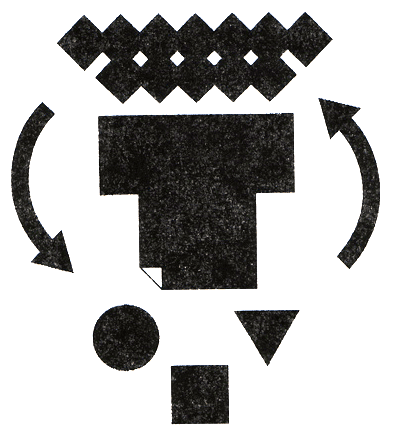- Portable Document Formats
- Visual Studies Workshop
- Columbia University Graduate School
- of Architecture, Planning and Preservation
- Thursdays 1:00-3:00 pm
- David Reinfurt
| Introduction | |
| 19 January 2010 | |
-- |
Portable Document Formats
At the beginning of the 20th-century, Ford Motor Company established the first widely-adopted model of factory production. Breaking down the manufacture of a Model T automobile into its constituent processes and assigning these to a sequence of workers and inventories, significant efficiencies could be realized. This Assembly-Line approach utilized increasingly specialized skills of each worker on a coordinated production line as the manufactured product proceeded from beginning to end. Large inventories, skilled laborers and extensive capital investment were required. Design revisions were expensive (if not impossible) to implement and the feedback loop with its surrounding economy was largely absent. Complicit with its early-Capitalist context, manufacturing at this scale remained necessarily in the hands of those with the resources to maintain it.
By the mid-1950s, Toyota Motor Corporation of Japan began to explore a more fluid production model. Without the massive warehouse spaces available to store inventories required for an Assembly-Line, Toyota developed the Just-In-Time production model and inverted the stakes of manufacturing. By exploiting and implementing a fluid communications infrastructure along the supply line of parts, manufacturers, labor and customers, Toyota could maintain smaller inventories and make rapid adjustments. A quicker response time was now possible and products could be made when they were needed. Further, tools were standardized — dies could be adjusted by hand and even changes in tooling could be described as a series of written recipes. All of the work could be handled by a wider number of less-specialized workers and design revisions could be made on-the-fly without shutting down production and re-tooling. The result was an immediate surplus of cash (due to reduced inventories) and a sustainable, responsive design and production system — smaller warehouses, faster communications networks, responsive and iterative design revision and products made as they are needed: Just-In-Time.
It isn’t difficult to imagine a correspondence between these two models (Assembly-Line, Just-In-Time) and contemporary modes of graphic design production. The prevailing model of professional practice is firmly entrenched in the Fordist Assembly-Line. Writing, design, production, printing and distribution are each handled discretely by specialists as the project proceeds through a chain of command and production. Now, laserprinters, photocopiers, page-layout softwares, cellphones, and word processors are splitting open this model. The project might be written by the publisher who begins a layout and works with the designer who commissions a writer, and sources a printer that will produce fifty copies by Wednesday. Even the software tools’ lines of specialty are irrevocably blurred — Microsoft Word has added page layout functions, Quark includes story editing and Adobe Illustrator claims to do almost everything including posting your website. Coincident with these overlapping roles is the opportunity to shift to a Just-In-Time model.
What are the possibilities for a Just-In-Time graphic design? Materials may be produced as they are needed, in the quantities required, on-demand and in a state of constant revision. Roles are blurred and collapsed into one efficient activity. For example, a poster designed on Thursday may be different than one printed next Friday. Two thousand copies of a magazine might be designed, printed and distributed in 24 hours. PDF files could be regenerated every two hours and automatically sent to a large emailing list. And these kinds of unstable forms and fluid production models allow the possibility of creating printed materials and softwares that are responsive, accurate, specific and up-to-date.
The complete syllabus is available as a PDF here.
--
CURRENTLY 150725 01:56:22
